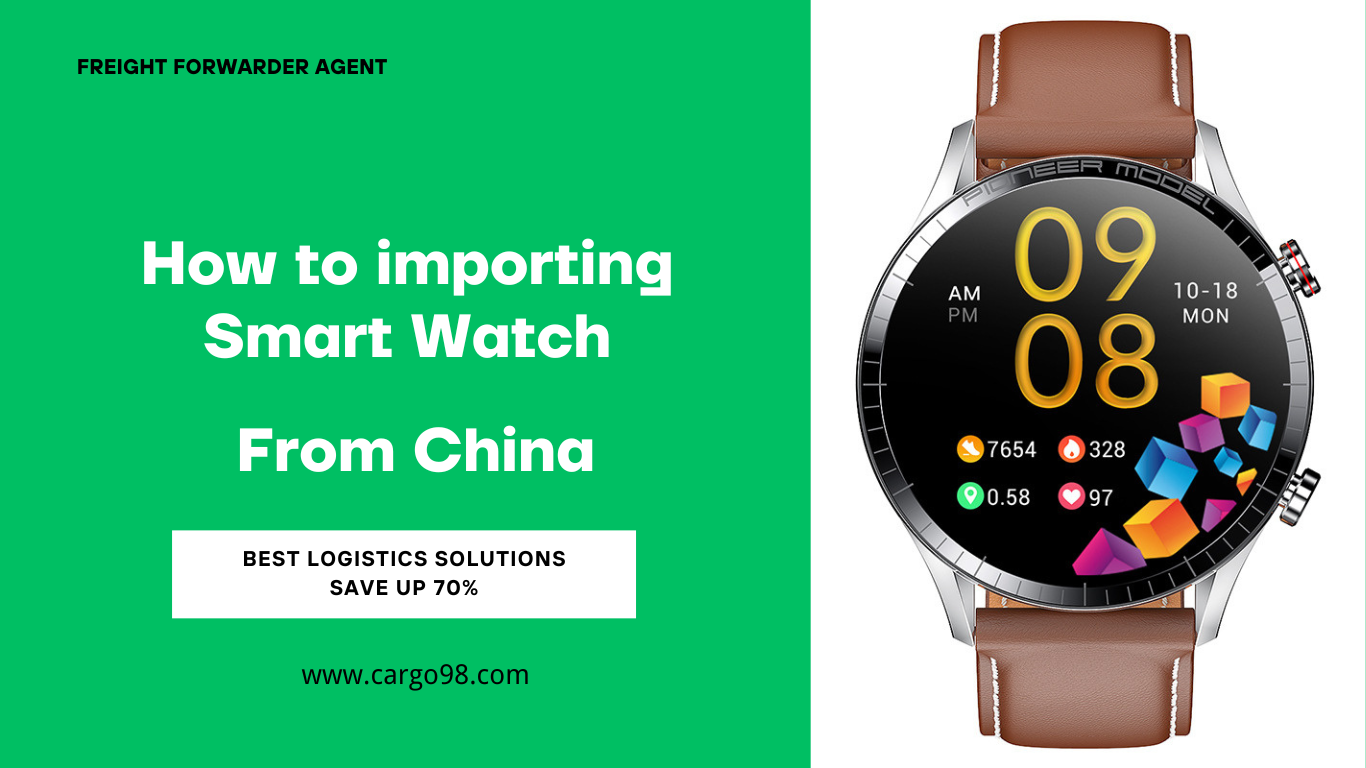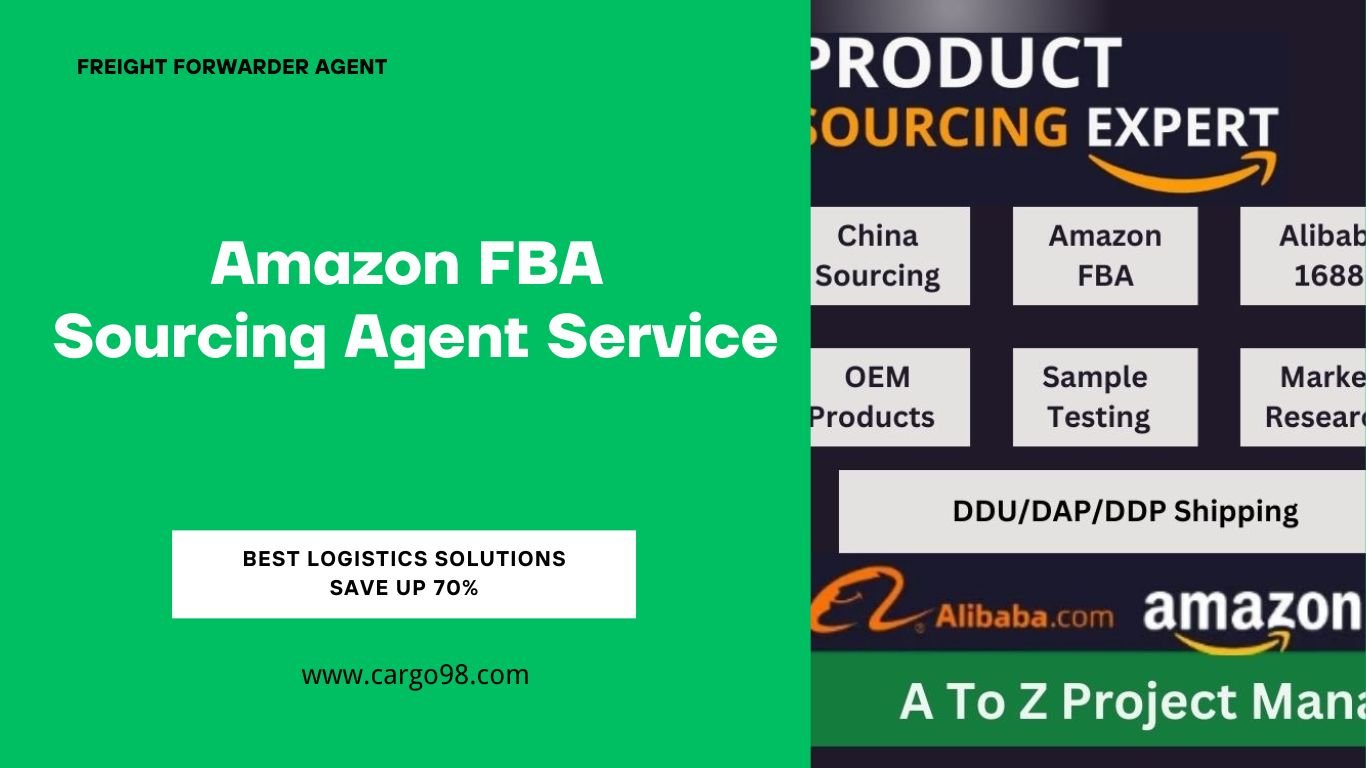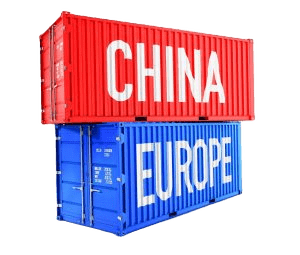Difference Between LTL and FTL
Assume you have an e-commerce or wholesale business model. In that instance, the only issue is deciding which way is best. Choosing amongst the many truck loading and unloading methodologies can be difficult. It will be beneficial if the things are delivered to their destination.Difference Between LTL and FTL
For the shipping and products industry, there are two ideal shipment methods:
Full Truckload (FTL)
Less Than Truckload (LTL)
Furthermore, shipping differs significantly between these two options, so let’s go further and pick the best one for your company.
In this blog, you will learn about both techniques, their benefits and drawbacks, as well as points to consider when deciding between FTL and LTL to better understand which is best for your shipping business.
Difference Between LTL and FTL
FTL (Full Truckload) and LTL (Less Than Truckload) Definitions
First and foremost, if you work in this industry, you must have a solid freight management system. Furthermore, in order to fully comprehend these two approaches, one must first understand the meaning of the FTL and LTL:
Full Truckload (FTL) Method
The term “full Truckload” refers to the fact that you occupy the complete trailer in order for your items to be delivered to the consignee. When compared to other truckload techniques such as LTL, this one is significantly more direct and takes much less time.
Advantages:
- Flexibility
- Reduced risk of damage
- Improved delivery timings
Disadvantages:
- Longer transit times
- Multiple stops
- Limited cargo facility
Method 2 – LTL (Less Than Truckload)
LTL stands for Less Than Truckload, and it is a sort of shipping that enables businesses consolidate shipments while incurring minimal costs. Companies frequently want to ship less products, just enough to fill a full truck. That is when the corporation can use the LTL business approach to make it more profitable by saving money.
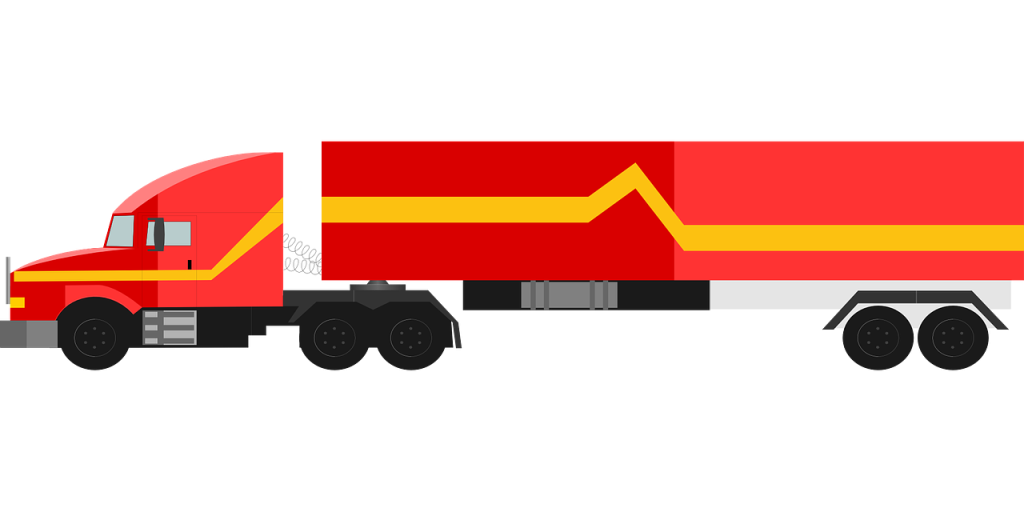
Advantages:
- Faster transit times
- Direct delivery
- Increased cargo capacity
- Enhanced fuel efficiency
- Real-time updates on goods
Disadvantages:
- Lack of flexibility
- More risk of damage
- Higher cost
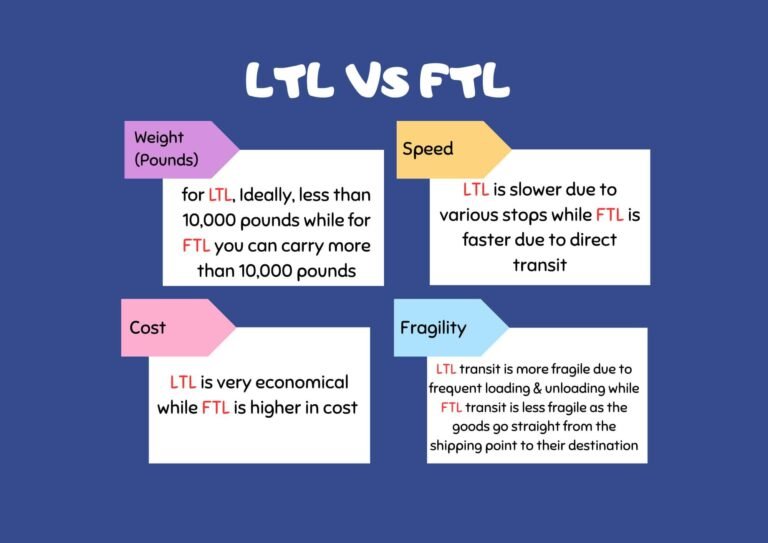
Tabular Difference – LTL vs FTL Shipping Methods
Now, after knowing the terms and comparing the two LTL & FTL, it is time to know the multiple aspects for your better choice between FTL & LTL.
Considerations When Choosing Between Full Truckload and Less Than Truckload
1. Size & Weight of The Shipment
Prior to anything else, you must ensure that your shipments are of the ideal size and weight as it is always pre-determined in both the techniques FTL & LTL:
A complete truckload
Shipments should ideally weigh more than 5000 – 10,000 pounds in this FTL technique, regardless of shipping size.
LTL (less than a truckload)
When using the LTL technique, the shipments should weigh between 500 and 10,000 pounds, and the delivery size is unimportant to the entrepreneurs.
2. Transit Time Requirements
This point will assist you as a business owner in determining the best solutions for meeting transit time requirements:
A complete truckload
FTL is regarded as the quickest and most efficient delivery technique available. Furthermore, the transfer of freight that primarily flows directly to the destination. The time-sensitive Cargo is almost certainly going to be a part of this strategy in your firm.
LTL (less than a truckload)
It is the best and most common option for transporting smaller shipments. The transport time may be little longer than intended here. The driver is obligated to transport many shipments at the same time, which cannot result in the consignment arriving at the destination on time.
And, if the package is too small to warrant the costs of a full truck, LTL is the ideal option. According to projections, the LTL market would develop at a CAGR of 7% between 2022 and 2027.
Fragility & Sensitivity of The Cargo
As per the fragility and sensitivity of the goods, make sure that you are choosing the appropriate method:
A complete truckload
If the shipments are sensitive and fragile, FTL is the best option. The driver will primarily be responsible for loading and unloading fragile and sensitive commodities. It can be safely delivered to its destination using this Truckloading procedure.
LTL (less than a truckload)
The LTL shipment is mostly used for delivering less fragile products. Because there will be several hirers, there is no guarantee that your products will be handled properly.
4. Cost Considerations
It is critical to align your company’s budget before allocating it to freight. As a result, cost considerations should be prioritized before the following:
A complete truckload
When your shipment contains more than six pallets of cargo, the FTL method is the best and can provide the best value for your money.
LTL (less than a truckload)
If the shipment is fewer than six pallets, the LTL method is the ideal option for your company. And can disclose the actual cost of the service provided.
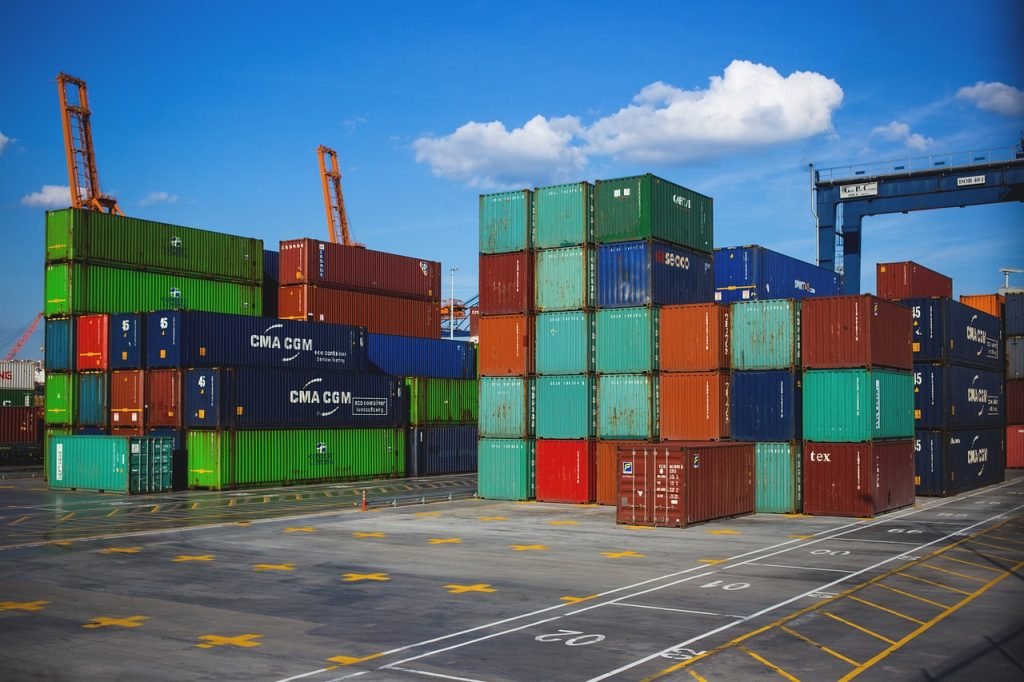
5. Frequency of Shipments
The final decision between these shipping methods is also influenced by the frequency of shipments required by your company:
A complete truckload
Generally, the lead time of shipments in this way is greater than 5 to 6 days. FTL is mostly used to convey huge goods or cargo that do not require frequent shipping.
LTL (less than a truckload)
The time between one consignment and the next in this approach is usually between one and five days. As a result, choose if your company does not require regular freight deliveries.
Additional Considerations When Choosing Between FTL and LTL!
Aside from the preceding considerations, there are several more factors to consider while deciding between LTl and FTL transportation methods for your company:
- Volume – Before deciding between LTL and FTL, you must determine the volume of your items.
- Space – The quantity of space necessary for the shipping, based on which the best method should be selected.
- Handling – The approach can also be chosen based on how difficult it is to transfer, load, and unload. This estimate can assist you in deciding between FTL and LTL.
- Liability – The possibility that your shipment will be damaged in transit due to insecure handling is a key factor to consider when deciding whether to go with LTL or FTL.
The final decision on whether to use FTL or LTL is based on a number of considerations and a grasp of the various principles. Many cases will demonstrate that LTL is less expensive and suitable for smaller but regular goods consignments.
FTL is preferable for more goods and fewer frequent deliveries, and it provides safe and secure deliveries. As a result, a proper option is true to be made based on the needs of the firm. You now have a thorough understanding of each of them as a result of this blog, so select the best strategy for your supply chain management firm!

